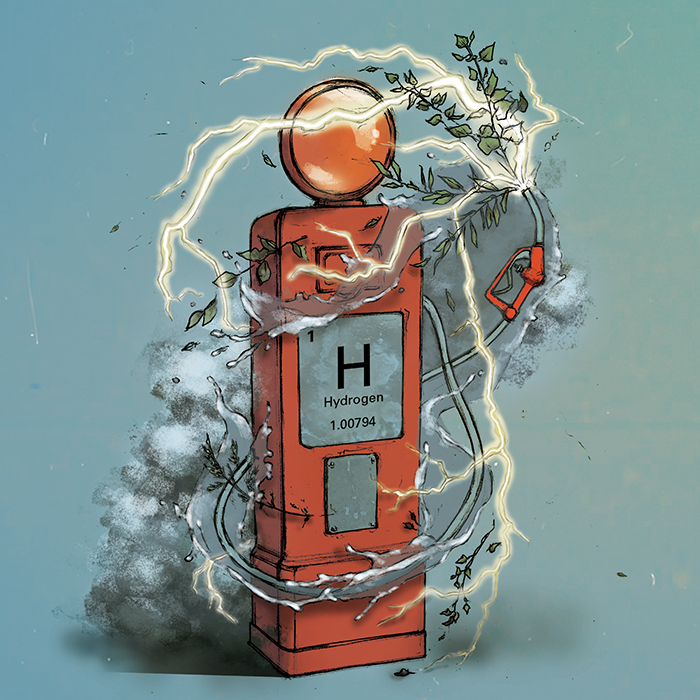
Other than the trademark front-end and fancy decals, the Mercedes-Benz F-Cell looks like your typical hybrid powered grocery getter. But the F-Cell is anything but. Under the hood of this compact four-door sedan is an electric motor, and the only difference between it and its hybrid counterparts is that it runs entirely on hydrogen.
In the F-Cell, hydrogen gas is passed through a fuel-cell stack, mixing with oxygen to generate an electric current to power the motor. The only by-product is water vapour.
The German automaker embarked the F-Cell on a 30,000-kilometre journey around the world to test its capabilities as an extended-range vehicle. One hundred and twenty-five days later, it got the proof needed to move ahead with the consumer-testing phase currently taking place in Europe and the United States, with mass-production slated to begin in 2014.
BMW, Toyota, Ford, Nissan, General Motors and Honda announced just this past year that they too will be working towards mass-producing hydrogen fuel-celled vehicles by 2015.
Is this the death of gas-powered vehicles? “No,” says Steven Bergens, chemistry professor at the University of Alberta, “but it will be.” Bergens specializes in fuel-cell technology and says the most important thing we need to do is to build hydrogen infrastructure because “our infrastructure right now only provides gasoline, diesel, natural gas and propane for vehicles.”
After the infrastructure is in place, finding a way to safely store the hydrogen gas and making the technology more economically obtainable will come in time, says Bergens. But he adds that the usual time for any renewable resource technology to mature and be accessible is estimated at around 10 years.
According to the Canadian Hydrogen and Fuel Cell Association, hydrogen fuelling stations are now being tested in Surrey, Whistler and Vancouver, B.C. Until the hydrogen technology gains enough steam to become a viable replacement, car manufacturers are redefining the way we look at environmentally friendly vehicles by combining electric and hybrid capabilities into one package.
Service manager for Don Wheaton, Peter Wilson, is a proud owner of the 2013 Chevy Volt, the world’s first mass-produced extended-range electric vehicle. The plug-in electric car comes with a 1.4 L gasoline generator that runs only when the electricity runs out, or when traversing steep mountain roads. It can accelerate from zero to 60 km/h in under nine seconds, so Wilson can shed petroleum without shedding horsepower.
“A lot of people had said that this wouldn’t work; it’s too this, it’s too that, but now the (Toyota) Prius is doing the same thing,” says Wilson, adding that Honda, Volvo and Volkswagen have all adopted the hybrid plug-in technology.
Volvo released the elegant four-door station wagon the V60 D6 Hybrid plug-in this year in the United Kingdom, while the Honda Accord and Volkswagen Golf plug-in models will be available within the next few months.
If you’re looking for something a little more like what you’d see Will Smith driving in I, Robot, the Cadillac ELR extended range electric coupe will give you luxurious style and innovation long before the year 2035.
The Cadillac plug-in hybrid will be available towards the end of this year, and will come with a typical Cadillac price tag somewhere in the range of $70,000, unlike the modest pricing for the Volt, which starts at $31,645.
No matter the price tag, many consumers are attracted to the minimal price the planet will pay in exchange for operating these green cars.





